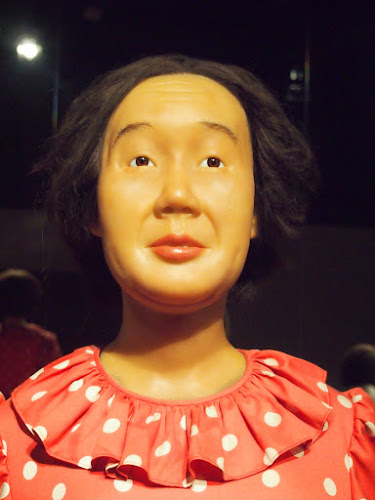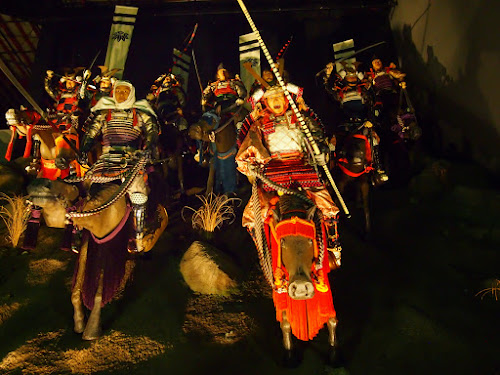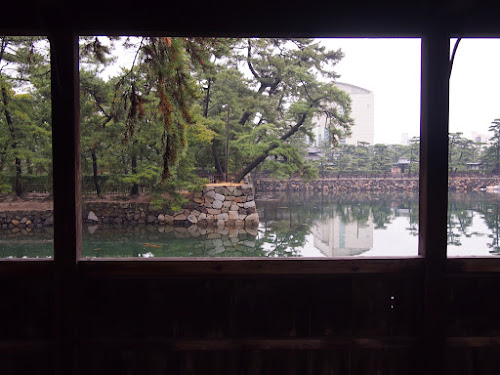Naoshima will have to wait for another trip due to another foggy morning. There will always be things that are not quite complete and a visit to Naoshima and the other nearby small islands is a good reason to pay a return visit to Takamatsu and Shikoku. Wanting to stay a bit more dry than our day in Kotohira, we made for Japan’s largest wax museum – Takamatsu Heike Monogatari Wax Museum.
A wide variety of personalities are showcased, such as an important 9th century priest, a manga artist and a jazz singer.
But, the real draw of the museum is a series of dioramas dramatizing the rise and fall of the Heike clan in the 12th century, including depictions of the war between the Heike and and Genji clans. The key battle of the Gempei war was fought nearby, not far from the the Shikoku-mura we visited in Yashima. This photo doesn’t do justice to the posing of the diorama of samurais charging down a hill.
We were grateful for extensive signage in English all through the museum.
Nara was burned and 3500 people killed in a battle at Nara because the monks had assisted the Genji.
When the rain stopped, we made for Takamatsu Castle, built in 1587 and a short walk from our hotel.
It is one of three castles right on the Sea of Japan . . .
. . . and its moats are fed from the sea.
Sayabachi or Saya Bridge is one of the bridges allowing access to the central part of the castle.
In the park inside the castle there were a few wire baskets where one might expect to see trash receptacles. There were no trash receptacles, but the grounds were immaculate and the baskets were filled with the pine cones you would expect to see littering the ground. The Japanese aesthetic emphasizes wabi sabi or the sense of the flawed beauty of natural simplicity. One Western writer has noted that it “nurtures all that is authentic by acknowledging three simple realities: nothing lasts, nothing is finished, and nothing is perfect.” However, acknowledging that nothing is perfect isn’t the same as not striving for perfection in how life is organized and lived.















